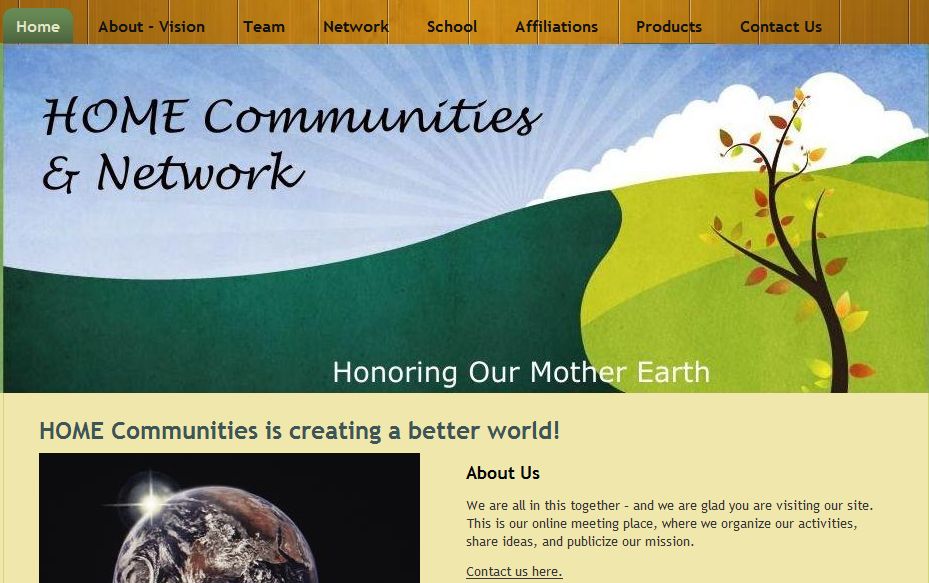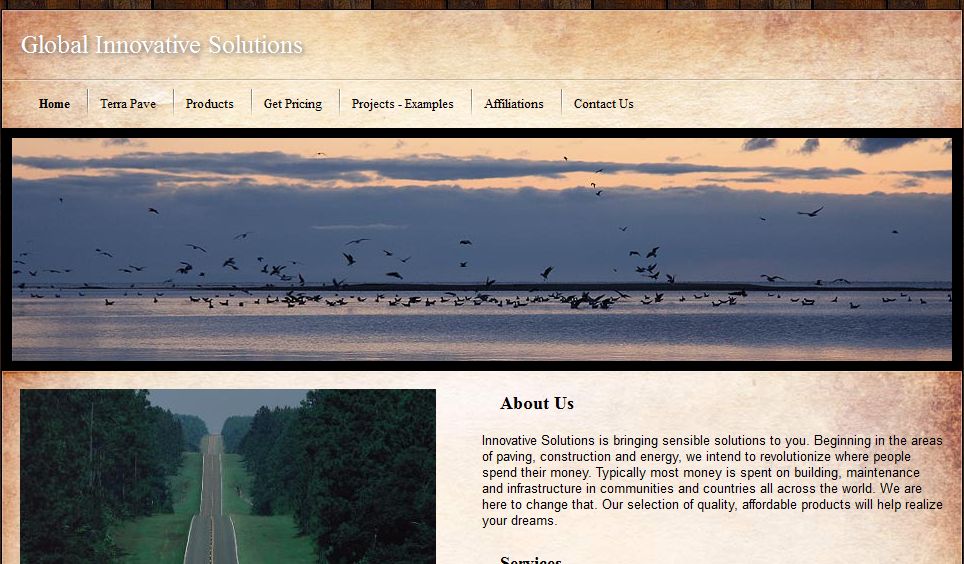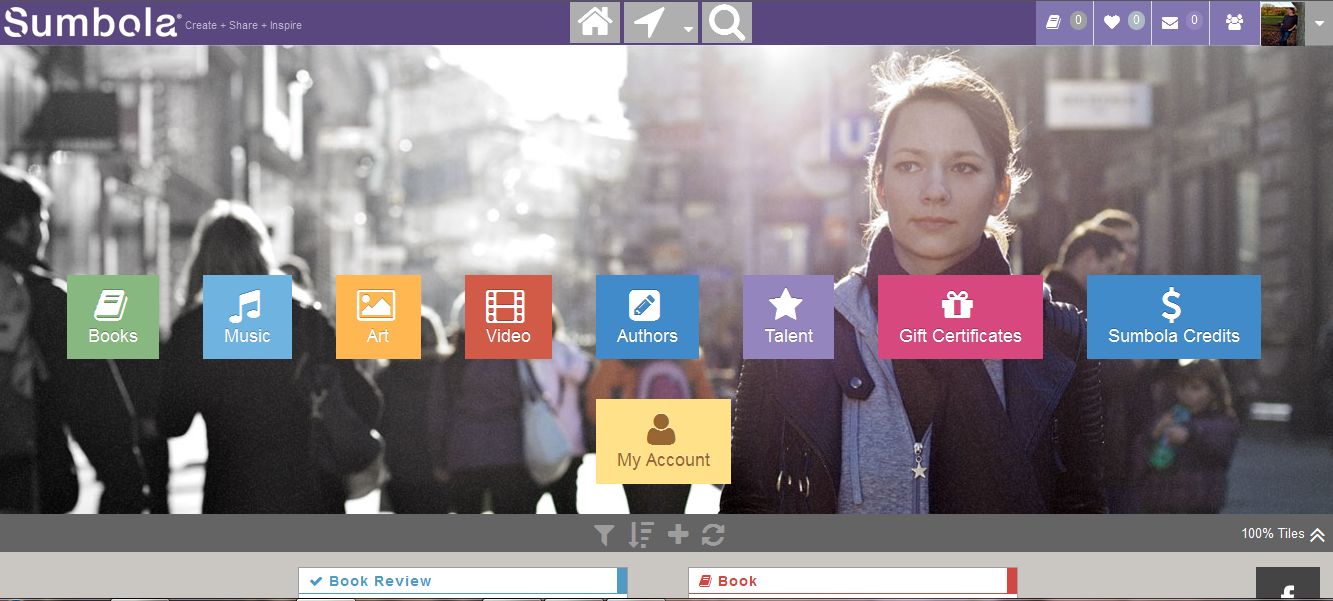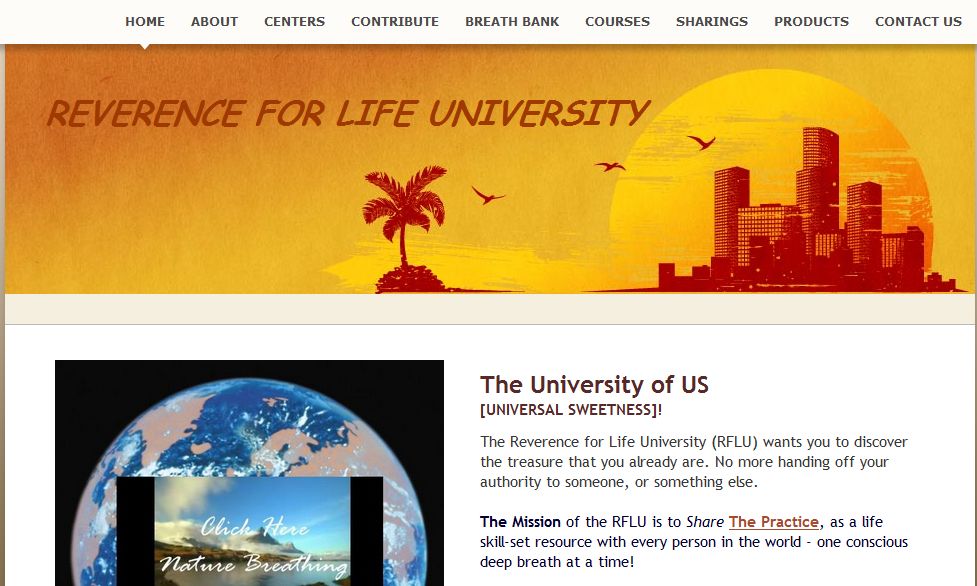HOME Community Network
(Honoring Our Mother Earth)
The HOME Community Network will create the first comprehensive resource providing people access to information about sustainable and new communities around the world. Building from our HOME (Honoring Our Mother Earth) Communities, this system will provide members of HOME and others access to a global network.
The HOME Community Network will create many benefits to HOME Communities, but most importantly to extend connections to all people´s who are imagining and working to create better living for all people and for re-establishing our true relationship to Mother Earth, the Spirit called Gaia.
The HOME Community network initially will provide access to six areas – which comprise the starting functions of a network to support the dissemination of information about alternative community development strategies.
It is designed to be a collaborative network to accelerate strategies for creating harmonious living here on Earth

The Six initial areas (services or network functions) are described in some detail below. The starting components will include
1) The HOME Community Portal
2) HOME Network catalog
3) Travel Portal & Exchange Program
4) Intelligent Technologies
5) Remembering Resource Center
6) HOME Community Association
This document introduces information from nearly 30 years of work in this area. It is organized in a way that can give a fairly comprehensive overview of the opportunity, but can be overwhelming to people just being introduced to the topic. All of the components have extensive documentation and support, but I am providing expanded discussion on only two topics – 1) Showcasing Stars - Communities, Individuals and Projects, and 2) How to Create and Support an Association with Online Services.
This is only a very simple “concept” – it is not pretty – it only serves as a place holder.
Below are Projects and Example Web sites – most are conceptual mock-ups.

Network Component 1 –
HOME Network Main Portal
The HOME Community Network main “portal” can be developed from a model that one of our team developed in Texas in 2004. All that is necessary is to adapt the approach used for the Texas Education Vacation online resource to a network of new and sustainable communities that are developing around the world. The above Star Tetrahedron outlines components that can be developed to support the community.

Network Component 2 –
HOME Network Catalog
The HOME Community Catalog will be a way to generate financial resources for further development of our HOME Communities Vision. By our Membership purchasing and selling through our Catalog, we will begin to build the mechanisms to extend what we offer to the rest of the world. Many of our members already have products and Services to offer, plus this can also extend to other products and services offered by others. Also, with effective marketing, the catalog could be a recognized Resource in the areas of Sustainable Communities around the globe.

Network Component 3 –
Travel Portal – Exchange Program
People love to travel. Members of our HOME communities will want to travel between communities. Plus, we will want to attract other like-minded people to our communities. Travel is the best “bridge builder” for Peace and understanding.
Also, an Exchange Program will create a way for communities to attract volunteers, experts and potential residents. Many opportunities to make the network “real” and connect people person to person, via experience and the foundation of HOME in the Spirit of Service to each other and Gaia. This program will be key to creating Sharing of ideas, talents and Experiences.

Network Component 4 –
Intelligent Technologies
Technologies are tools that have been created to help us communicate, collaborate and create the world of our dreams and imaginations. Using these tools for their ultimate purpose, for good, can bring unparalleled success. Technology tools are laying at our feet to help us deal with all of our challenges whether they are environmental, social or economic.

Network Component 5 –
Remember Resource Center (education)
It has been said that 100% of human potential will be realized through proper education. Socrates believed we didn´t “learn” we “remembered” – this idea is consistent with the Law of One. The HOME Network will be successful if we help people remember the Truth of who and what they are, and why we came here to this beautiful world we call HOME. To this end, providing practical education and information will be key to our success.
Exciting possibilities exist for new technologies to reach people in new ways, and to give the tools to create the lives that they really want to. Creating the next “Univ. of Phoenix Online” based on practical and useful information, and by using gaming environments for engaged and entertaining experiences will transform people´s lives, especially younger audiences.
Network Component 6 –Currently in development
HOME Community Association
A primary aim of the HOME Network will be to support our member communities, but also to extend our network out to bring together the total universe of new development communities. By creating an association to serve these places, and by adding-value to the membership, we will accelerate the cause of global transformation to one of Peace and Harmony.
HOME Community Network - waking up the “Sleeping Giant” – Introduction and some Background
Very few people are aware of the real story of how Sam Walton catalyzed Wal-Mart. It was his realization that rural places are under-served. He recognized the need to extend products and services to rural places.
This need and opportunity still exists but the dynamics and the services that are needed have changed. More importantly rural places and urban centers exist in a dynamic relationship, each dependent on the other. But this linkage is over-looked. This is where the Starseed Community and HOME Community´s opportunities can be realized.
Members of our Starseed Community team have documented and strategized on this opportunity space for more than 15 years. The details of this strategy fills hundreds of pages, but I wanted to summarize as briefly as possible to where our strategic alliance could lead – to a literal transformation of rural economies. The need and our aim is Global in scale because the challenge is ubiquitous, but our solution is doable, scalable and realizable. The ideas we highlight here are
1)The Urban-Rural Nexus and Building the Bridge
2)Sustainability – based on creativity and cooperation
3)Diversification of Rural Economies – is happening but we can be the catalyst
4)Education – Practical, Entrepreneurial – ONLINE
Urban – Rural Nexus and Building the Bridge
Traditionally urban and rural are viewed as two separate entities competing for resources. In actuality it is a whole system. Rural economies are dependent on an influx of dollars from the city. Cities are dependent on rural places for food, water, fiber, natural resource protection and for leisure and recreational respites. In other words the two are inextricably linked. The challenge for rural places is real. Geography and supplying various services to rural places has been a constant challenge because services need to be extended across distances, without the “critical mass” of customers which will pay for the services.
Cities inherently have better access to services, but one could argue that the quality of life is not necessarily better. Much could be written about this situation. The key issue is to introduce the “opportunity space” for establishing services in rural places, and to identify how urban centers and rural places are dependent on each other for ultimate survival. This summary suggests first recognizing the interdependencies and secondly to build a bridge for enhancing the opportunities that are presented to support this important dynamic relationship. That bridge can be built via the Internet.
It is critical to extend services to rural communities, and, with the advent of the
Internet, it can be viable economically to do so. There are cases of businesses that realized the rural opportunity such as Wal-Mart and Dollar General. Both became highly profitable. However, these examples do little justice to the opportunity that the HOME Community Network can realize by extending services, education and empowerment tools and resources to support the local citizenry of rural communities to be grown from the community itself.
The overall potential for success in building this bridge, in combination with the “systems approach” for managing negative impacts more effectively, is tremendous and not just economically, but more importantly for the quality of life. However, our new opportunity is even greater with the advent of the Internet. In fact, we often point out that our new success will not be based on consumerism, selling people a bunch of stuff, but on providing resources to empower people through “education” and the various “empowerment tools” to empower people to realize the inherent potentials available in all places 1) people, 2) the natural resource endowment, and 3) the history and culture of the place.
A basic fact could be stated as we look at the rural-urban question: not every one can live in the city! Nor would we want them to. One need only look at history to see what happens when too many people live in close proximity.
However, as one looks at economic pressures on the average rural citizen there appears to be significant challenges to be able to “stay on the land”, so to speak. And pressures continue to grow on urban centers as mass exoduses occur from rural areas of people hoping to find a better life, especially in developing countries.
However, there are significant deviations to these trends in places like the United States.
Where people have freed themselves financially, there are growing numbers that are moving from the city to rural places, and/or buying second homes there. Some investigators are highlighting that rural places are flourishing. Needless to say as one travels in rural communities whether it is in the United States or any country, there appears to be some level of revitalization. Nonetheless, in our observations, problems are still ubiquitous, especially for the poor. These problems can especially be seen in communities that have historically been on the fringe, economically, socially or geographically (e.g. urban) or are in areas of racial diversity.
Further stymieing the process of agencies or corporations extending services are that their efforts are “silo’ized”. Each entity (agency) segments their area of service and only tries to push a narrow set of ideas/programs onto their constituents – almost always utilizing a “top-down” approach. Efforts are fragmented and lack quality and substance. We could cite several cases. In the process they are using up precious financial resources that could be better utilized by cooperating with other agencies and programs, that not only extend services from the top down, but start to build from “grass-roots”.
The time has come to bring more value and substance in the programs and services that are offered in the spirit of creativity, cooperation and efficiency, and utilizing new technologies. Drivers for this process go beyond the traditional, almost exclusive economic drivers to include things like, environmental sustainability, enhancing the “quality of life”, innovation and inspiration in business and agriculture, creativity, enthusiasm, human connections, passion, spirit, intuition, etc. In summary, some important points to consider when evaluating the “Rural – Urban Nexus”
- Rural landowners can provide much needed land and natural resource management, even if the “public will” was to create agencies to provide “land management” it is highly cost prohibitive, plus the performance of these agencies for long-term “protection”, from a historical perspective, is not satisfactory.
-Rural areas are necessary for the “recreation respite”, from the high paced, stressful lifestyle of cities. Nature is truly necessary for adequate rest and revitalization and large, quiet natural areas are not normally found in cities.
-Plenty of solutions are available in educational institutions and agencies that can be utilized to cope with the rural economic, social and environmental conundrum. The key is to convert this content, and extend these services via the HOME Community Network.
-There is a tremendous opportunity to create a new service paradigm for “Extension education” via the Internet and technology tools.
-Value comes from real solutions. There are numerous “success stories” at various scales from around the globe by which general principles can be derived and then those strategies adapted to various contexts.
Sustainability in this opportunity is based on creativity, cooperation and environmental sustainability. By empowering individuals to find and develop communities and businesses that fit with what they enjoy, this supports these people to stay in the community where they want to live. This then establishes a leadership base and helps people in the community see that cooperation between businesses and organizations strengthen the pillars of community. Based on a regional model, this spirit of cooperation then extends between cities and towns within and between regions, especially related to tourism but also to traditional and emerging economic and higher education development. This is the paradigm shift that is occurring and HOME Communities can position itself in a leadership role, and can be the first to realize this significant and important opportunity
Diversification is one of the key elements and opportunities that are waiting to be realized. The last 100 years has seen the advent of increasingly marginalized and single industry focused economies. This model is not sustainable. Every place in the world has a multiplicity of opportunities available, but these are only realized through creative, intelligent people pursuing and following their own creative spirit and through collaboration. The key to stimulating diversification is re-membering (education). Also required is leadership (not as authority, but more as wise guidance) and a revitalization of communities to support entrepreneurial development and opportunities – this can be done through business and commercialization incubation.
Wal-mart made a tremendous demonstration of the potential for business in rural communities. However, the bulk of the opportunities were not realized in all communities. Those opportunities were, and even more so are, to empower people in communities to look to new business development in a variety of sectors including tourism, small industry and service. With the advent of the Internet small business can grow anywhere. Rural places are especially attractive to people who desire quiet and less stressful environments. More and more people who have had successful careers are re-locating out of the city. No matter what, everyone cannot live in the city and one of HOME Community´s greatest opportunities is to support this process of people moving out of the city back to the country.
Education – Practical, Entreprenurial – ONLINE We are all familiar with the success of the University of Phoenix Online – now there are physical campuses in every major city in the U.S. But the University of Phoenix is mostly a traditional education institution. A very real and gargantuan opportunity exists to follow the U. of Phoenix, but by providing more practical and pragmatic educational content. This includes new education vehicles like gaming environments. These can relate to subjects such as tourism, entrepreneurship, hospitality, value-added agriculture, new sustainable rural property development, new “sustainable” practices in agriculture, etc. Much of the content for this new Online Experiential University already exists. All that is necessary is to adapt the content into an online format, and make available similar to the Land-grant extension model. The need for this information is tremendous in the U.S. and in international settings, but especially developing places.
Another key to this opportunity is to extend these services via the Internet but go beyond what people are currently using it for – information and networking. The next stage of our utilization of these tools is to put them to work by converting the information people are seeking into forms that are usable to them, that address their needs, questions and concerns. As for networking, it is time to move away from just socializing, such as Facebook, to true “collaborative networking”. This means to give practical and useful tools to people for creative networking that empowers them to grow their businesses while also making their time spent online more effective and efficient. The great part of this is that nearly all of the tools already exist, all we have to do is bring them together into a “tool-box”, custom-made to their requirements. On the other end of the spectrum we have the markets already waiting to buy – for example Location Based Services (LBS).
Showcasing Stars – Communities, Individuals, Projects
As part of our endeavors with HOME Community Network, one way to “showcase” what is happening is to create a “Renewable Community” travel show. One of our HOME Community members, or a team, can travel the world showcasing what is happening. For this example, just change references to “experiential tourism” to “green”, “sustainable”, or “new communities”.
Below is an outline for the concept that Dr. Skadberg has been working on that can easily be adapted to the HOME Community Network.
See additional Documents
Expedition
How to Create and support an Association with Online Services